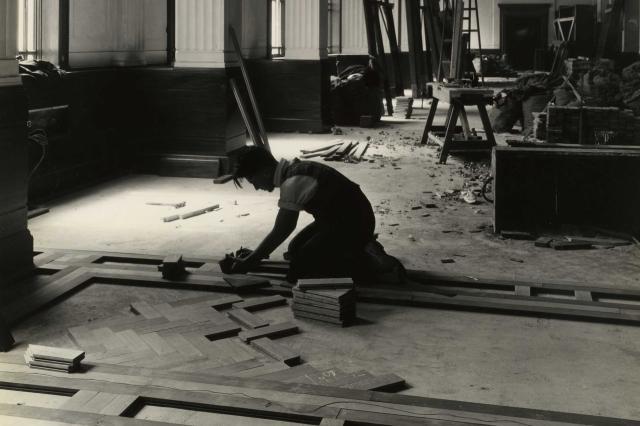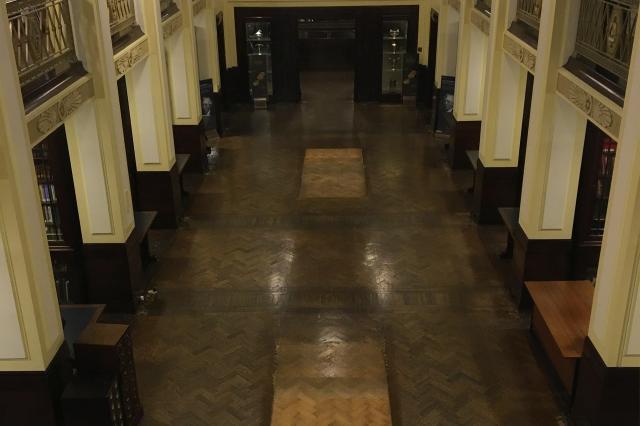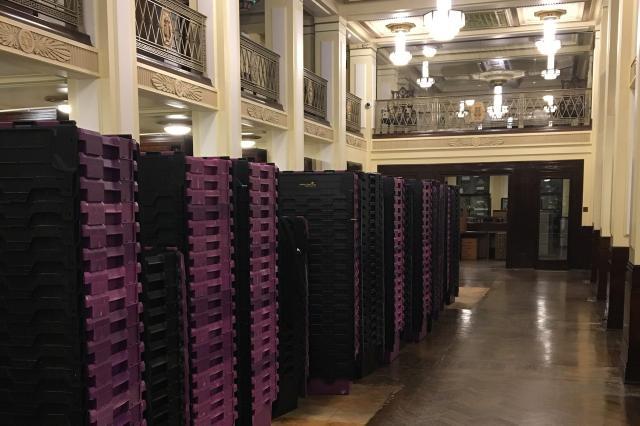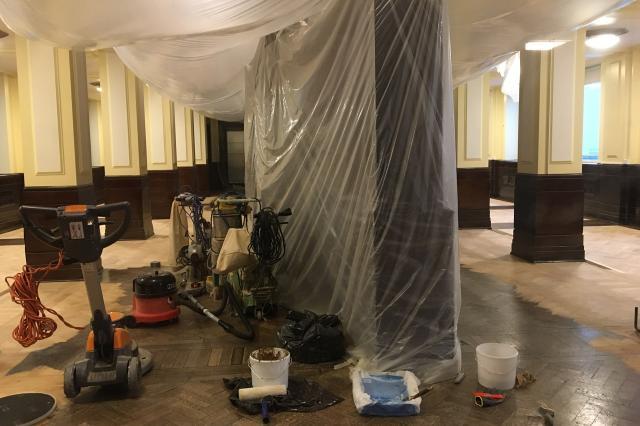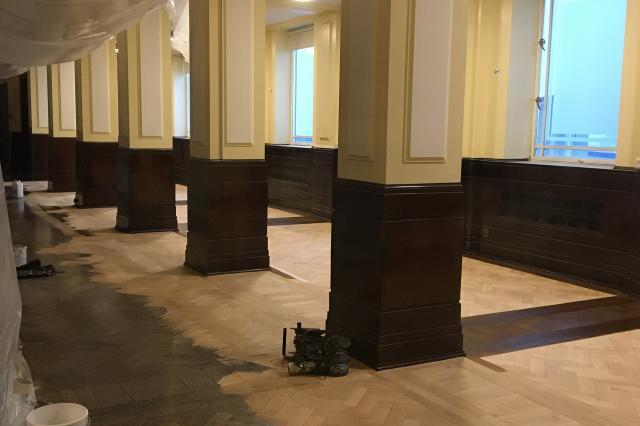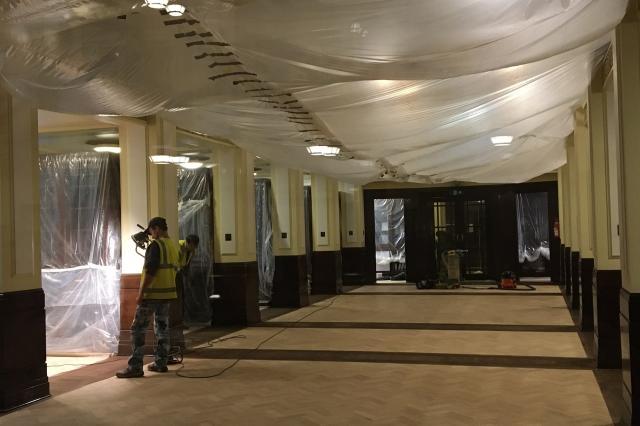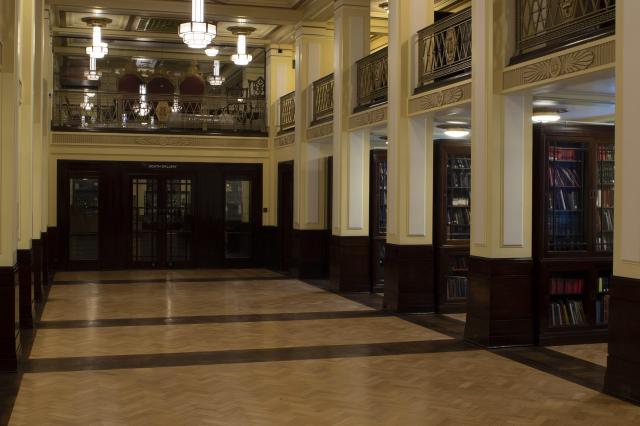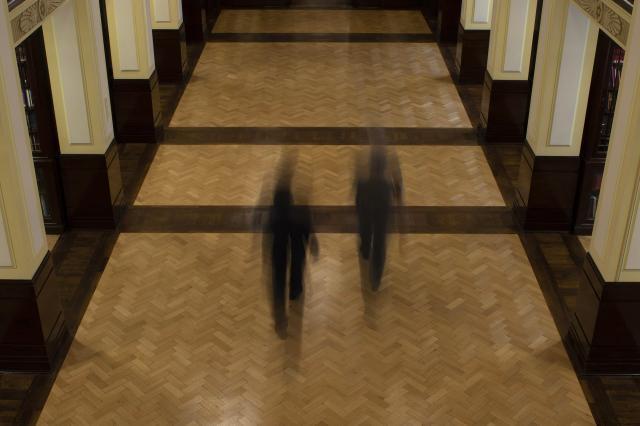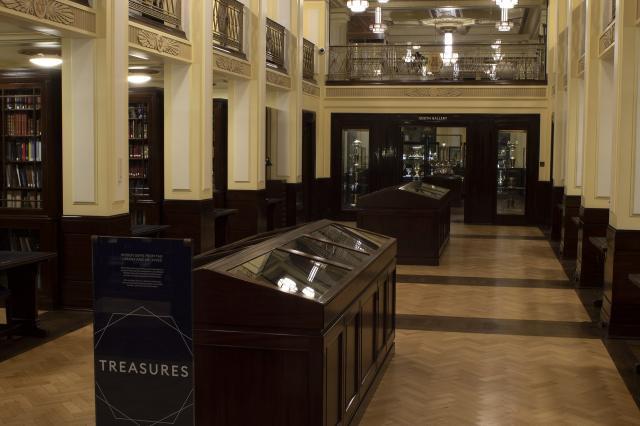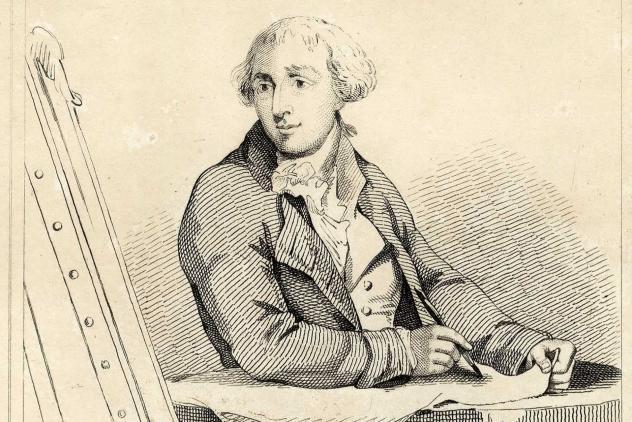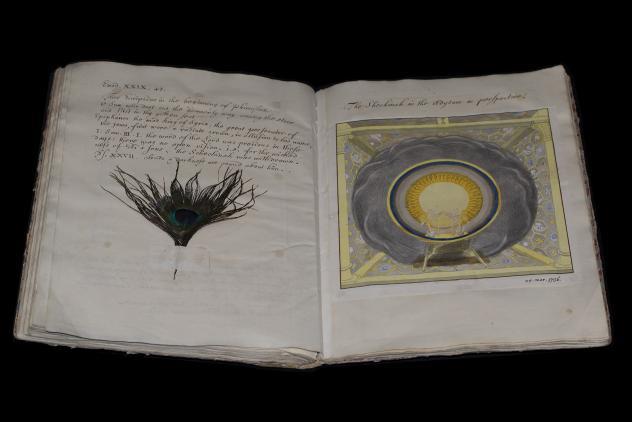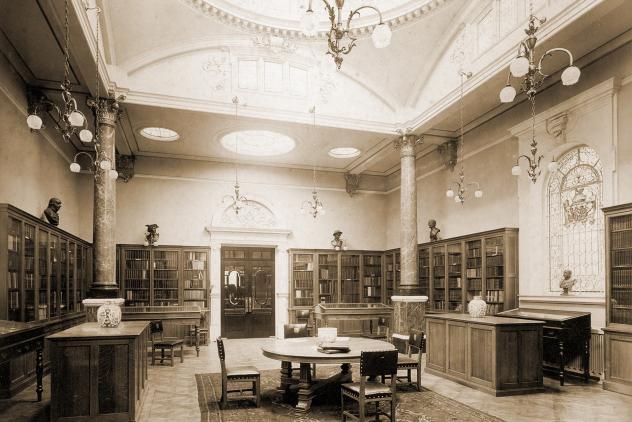When Freemasons’ Hall was completed back in the 1930s, it was a shining light of Art Deco splendour. Following the huge crowdfunding project that raised over £1,000,000 to build the Hall (or the Masonic Peace Memorial Building as it was then known) there was the equally mammoth task of decorating the interior.
The main public and ceremonial areas are laid with black, cream and pink marble accented by bronze and brass fittings and rich dark wood furniture. The wonderful sharp curves and angles with starry details that decorate the ceilings and fixtures are synonymous with the period in which the architect duo Ashley and Newman conceived of the building.
Of course, this monumental building came with a purpose-built library, reading rooms and museum. Appropriate for the time, they were a welcome addition to the home of English freemasonry.
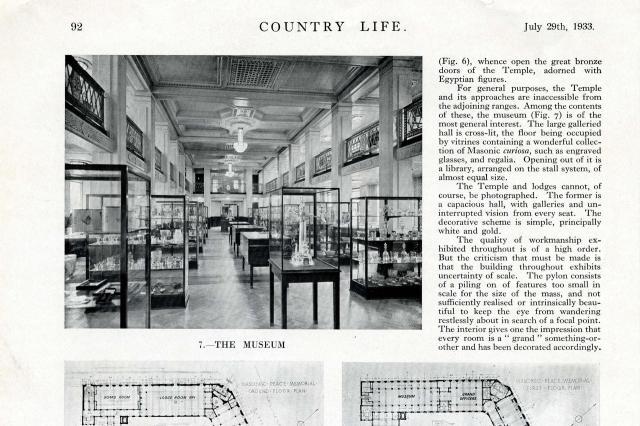
While we have since expanded into the former reading and smoking rooms, the main Library has not changed much since those early days. Its crest-bearing steel railings with brass handrails on the balcony and crafted plaster ceiling insignia remain as fascinating today as ever. Some of the furniture did move about though. The large coffin-like display cases in particular.
Over the years the Library has had countless visitors and each footstep has made an impact on the original parquet floor. The poor hardwood floor has lasted a long time, getting darker and more tired by the decade. However, this year we decided it was finally time to restore it to its original glory, and show a little love to the bookcases, tables and chairs too.
Beginning in January the Library was emptied of its furniture and famous books. The books were carefully removed from their cases and boxed up to be temporarily stored in the Museum’s South Gallery, which closed to the public for the duration.
The bookcases gathered in the Library’s central space before the entire area was wrapped up like an Egyptian mummy to prevent any dust escaping during the noisy floor sanding process. It was an epic task that involved scraping, sanding and re-staining the individual oak tiles. Then there was the sealing, cleaning and finally polishing to bring that extravagant luster back to life.
Headed by Librarian Martin Cherry, our Library team carefully returned the books to the shelves over the days that followed and the reader’s tables were then re-covered with the dark blue skin that adds wonderful luxury to the researcher’s experience.
We re-opened the Library not long after on the first week of February 2020. That’s 87 years since the building originally opened. It’s been quite a while since the Library looked so new.
